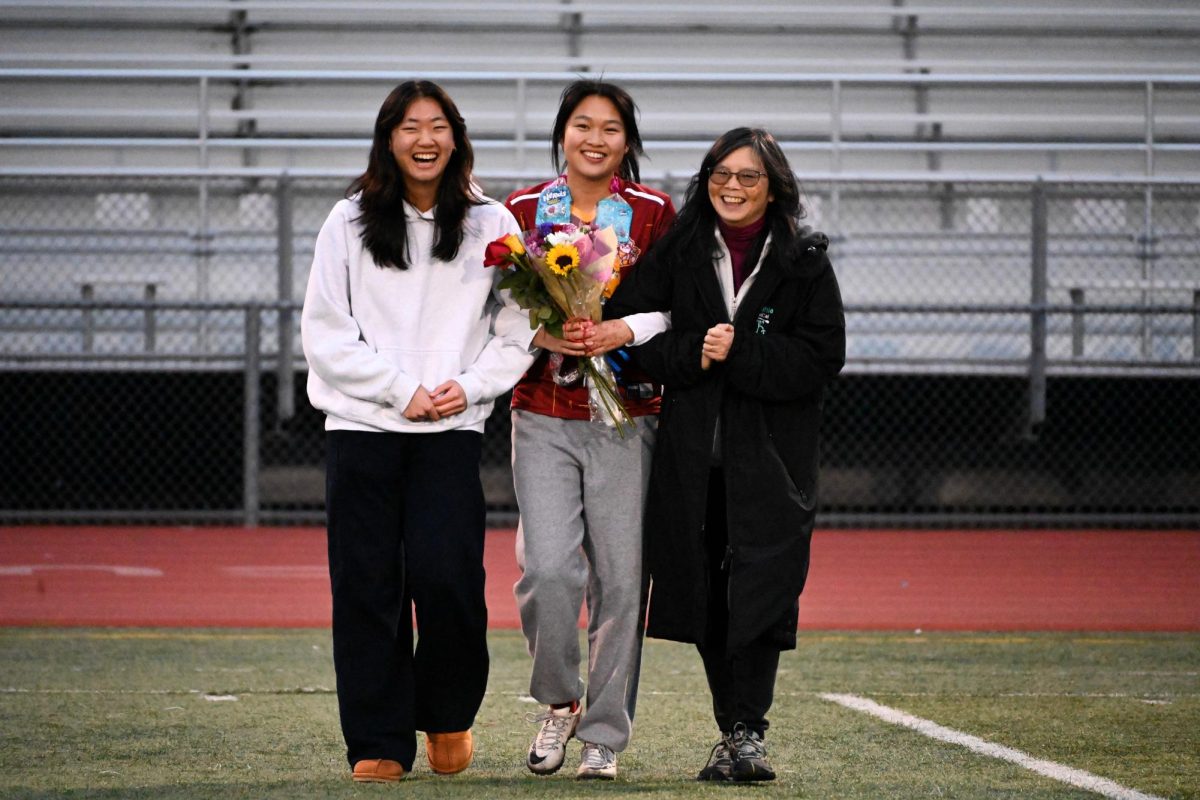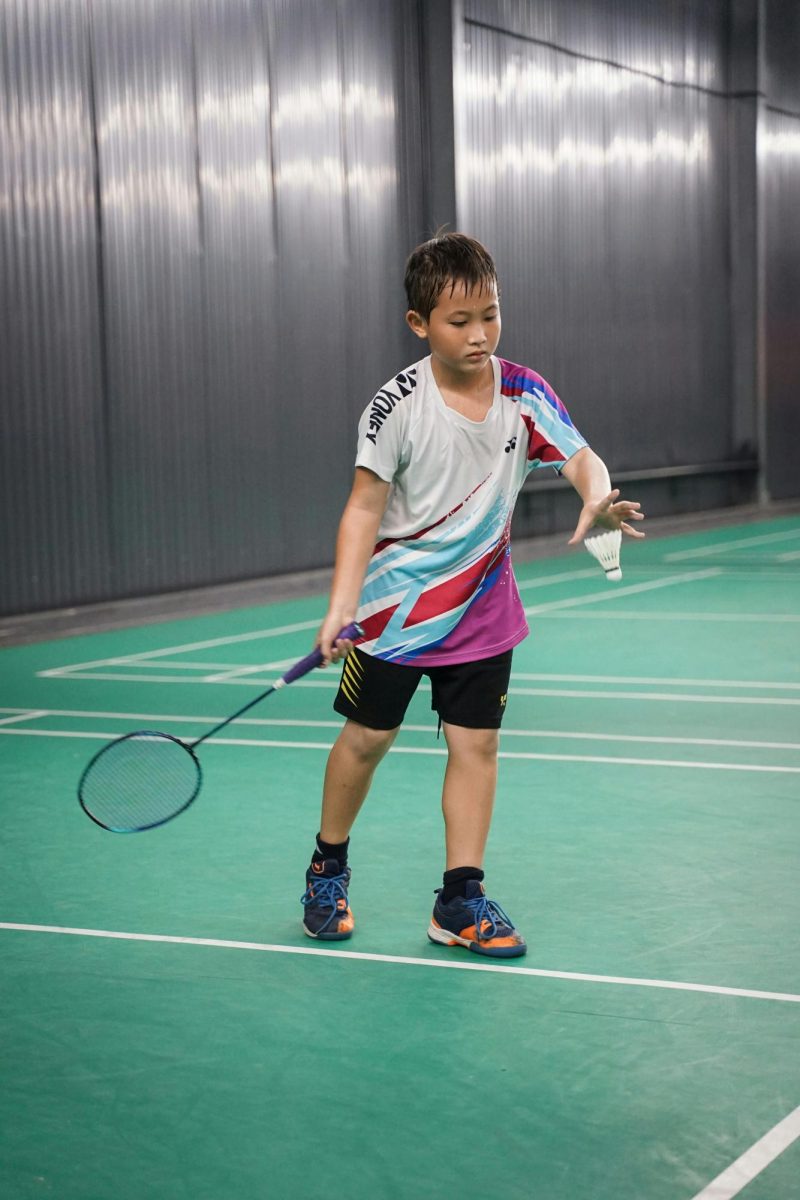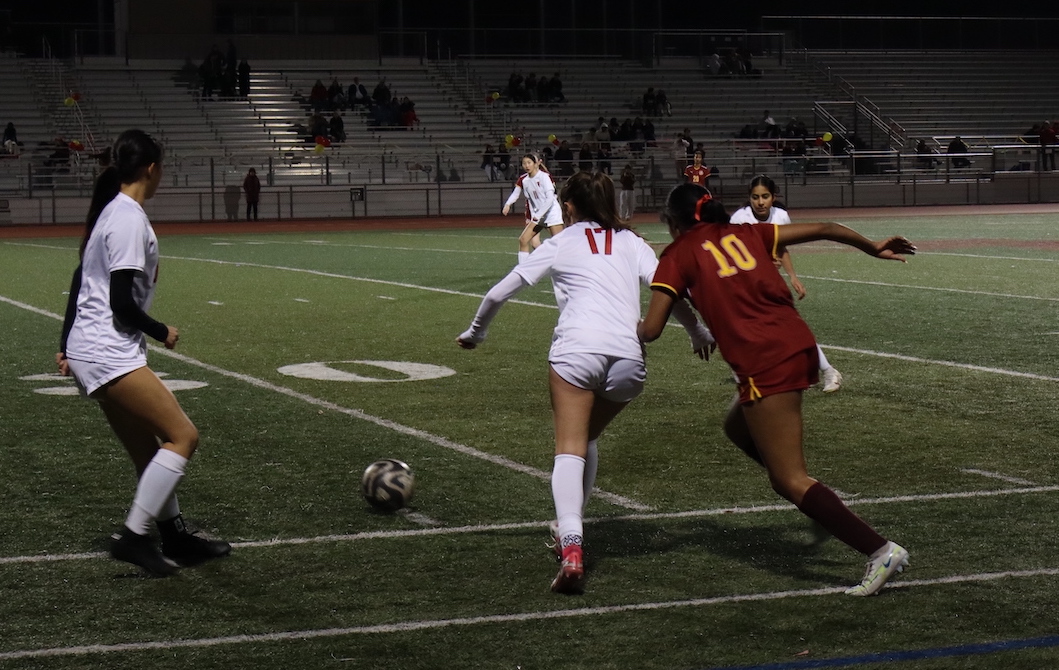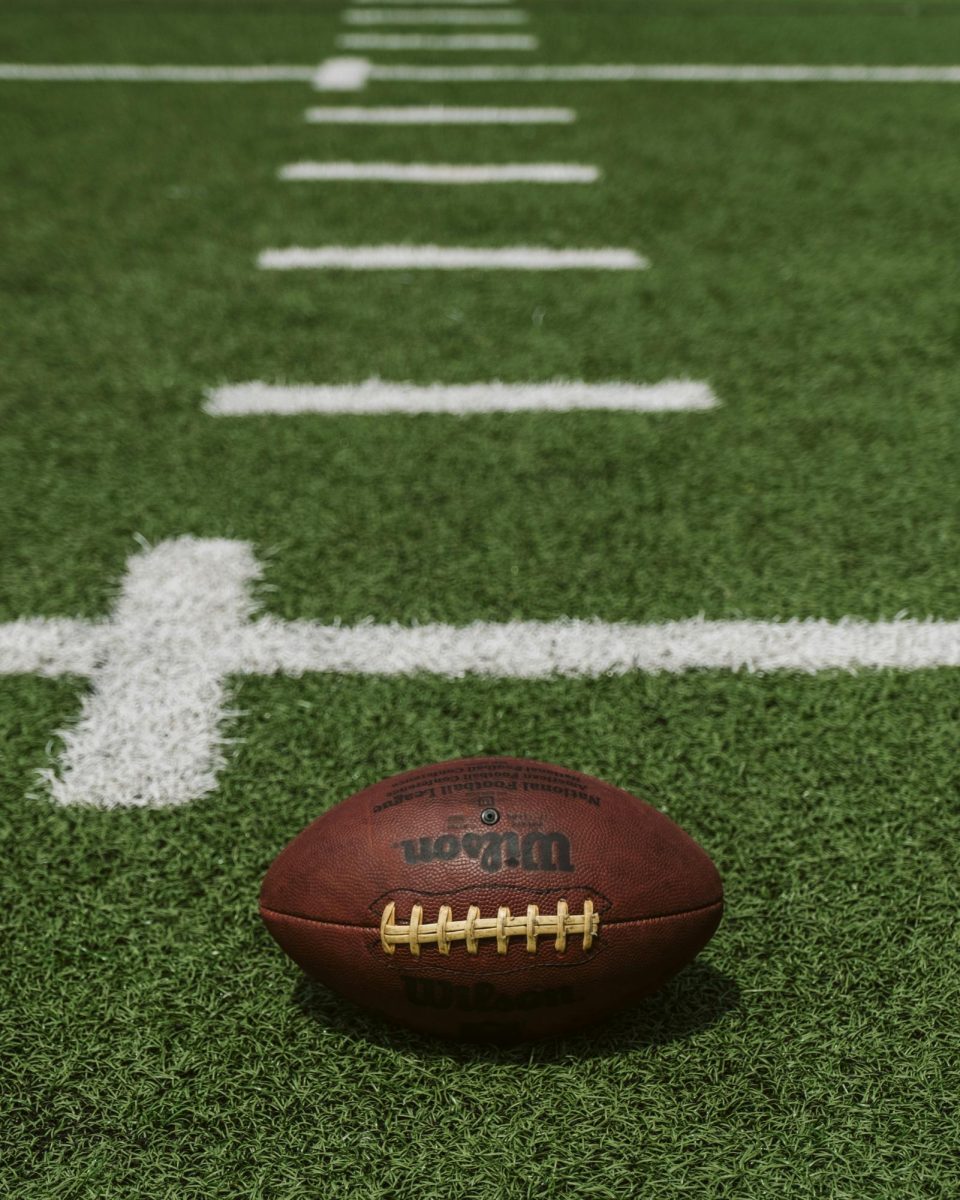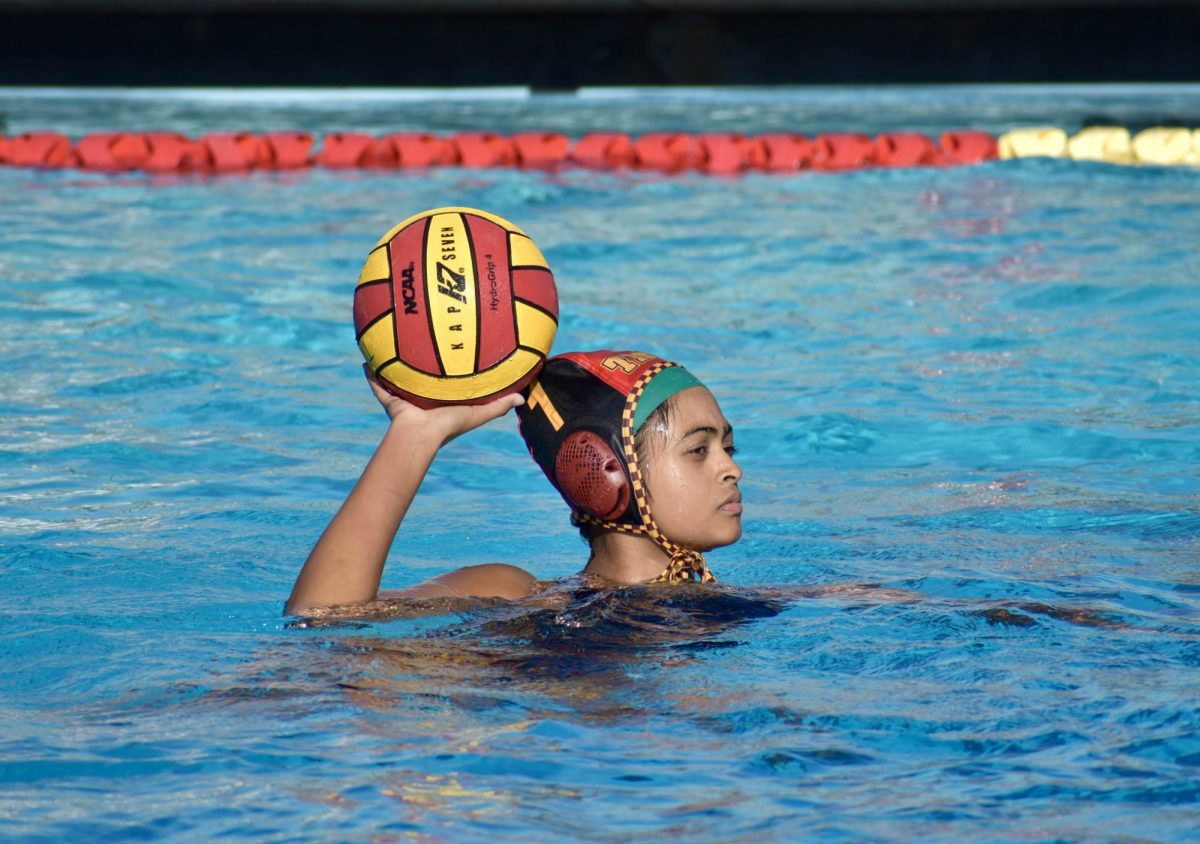It only takes one wrong step — one muscle pushed a little too far past its limits — to permanently turn an athlete’s life upside down. For senior Sophie Hua, attacking midfielder and captain of the girls varsity soccer team for the past two seasons, this sentiment hits close to home.
Hua, who has been playing soccer since the age of four and went competitive at 11, began showing signs of serious injury around the end of the 2021-2022 girls soccer season. One day at soccer practice with her club team, Hua noticed her lower back tightening up to the point where she had to crouch down or touch her toes to relieve the pressure.
Said Hua, “At the time, we didn’t think anything was wrong with me — we thought that the pain was from sitting too often. […] I stopped playing soccer for three weeks in hopes that the pain would subside and I would be able to play in a tournament, but it didn’t go away.”
Hua has now been dealing with chronic back pain for three years, the worst of it being when she was unable to even sit in a chair.
In addition to the intense pain and having to suddenly step back from soccer, months passed before Hua was given a clear diagnosis or an official recovery time. From trying home remedies such as daily massages and drinking celery juice to undergoing acupuncture and physical therapy, Hua made endless attempts to accelerate the healing process.
Said Hua, “Recovery was mentally really difficult because it never seemed like anything I was doing was working — the pain would always return eventually.”
For countless student athletes, their sport is an outlet to channel pent-up energy, release stress and have fun with their teammates, making a physical setback an athlete’s worst nightmare. In addition to the mental toll, severe injuries can also affect players in other areas of life, such as their academics.
Said Hua, “Before my injury, I would have described myself as a very active and athletic person, so it was mentally really difficult to slowly watch my body deteriorate. […] My injury also made it really difficult for me in school because I couldn’t listen to lectures for long without pain, and it was hard to focus on tasks.”
Hua’s experience playing soccer throughout the 2022-2023 season was a rollercoaster of emotions for the athlete.
“Being on JV [sophomore] year was both fulfilling and frustrating for me. It was my return to playing soccer, while still being in pain,” Hua said. “It was hard to overcome the mental hurdle that my body just wasn’t going to be able to do the things I wanted it to do or play how I used to play. But I still really enjoyed coming back to a team environment and growing close with my teammates.”
In anticipation of the 2023-2024 season, Hua began playing soccer on her twin sister’s competitive team and practicing with them multiple times a week to prepare for tryouts. Hua’s goals as a new varsity captain were to keep up intensity during games and establish confidence in one another. To any other fellow athletes struggling with the fallout of a severe injury, Hua shared a few words of wisdom.
Said Hua, “My biggest piece of advice is to be kinder to yourself. Cut yourself some slack. Progress to getting better isn’t going to happen overnight and your body isn’t going to be the same as it used to be. Take the small accomplishments and be proud that you’ve accomplished what you could while still recovering.”
Although injuries can impact an athlete’s life in a multitude of ways, maintaining a positive mindset while working towards realistic goals can help them remain hopeful about healing, both mentally and physically. Hua performs several small routines habitually to preserve her health, including taking painkillers, using heat packs and drinking an herbal tea mix.
Despite these efforts, Hua’s injury continues to affect her today. Some days she is able to play full games, while on other days her body cannot handle the physical strain.
“I am no longer as agile as I used to be and taking shots is hard because of the compression it causes for my back,” Hua said. “My body seems to only be able to go full out for one [game per week] but I’m just glad I can play soccer at all and finish out high school doing something I have a lot of fun playing.”
In an updated 2025 interview, Hua reflected on the significant milestones and setbacks she has faced since her interview last year.
“[After] soccer season ended last year, I was really trying to focus on physical therapy and [improving] the current processes that I have to make my back feel better,” Hua said. “I’m going to be going off to college [and] I don’t want to have to deal with back pain if I’m gonna be sitting in libraries for eight hours straight.”
As a member of Cupertino’s Track and Field team this season, Hua continues to stay active. Physical therapy has been a crucial factor in allowing her to do so, as well as finally understanding the cause of her pain — her sacrum, which tends to fall out of alignment in her back.
Although the pain persists, Hua is comforted by the knowledge that pushing herself and testing the limits of what her back can do is not necessarily re-injuring the muscles as much as it is strengthening them. “[It’s really helped] knowing that this back pain isn’t gonna be something that I’m permanently causing more damage to,” Hua said.
Hua explained that the most important facets of recovery are having faith in herself, being patient and accepting that even though she may never be able to play the way that she once did, she is still continuing to slowly improve.
Said Hua, “I do think that this year was better in terms of my mobility because of the PT I’ve been doing. It was more so my endurance and my speed that were lacking compared to when I was younger, but I think I’ve accepted it at this point. I know that [my injury] is always going to hinder my ability to play […] but I just have to adapt.”
Recovery has also taught the athlete the importance of listening to her body and ensuring that she is applying the advice she gives others to herself.
“I realize I was definitely being hypocritical about my own health when it came to other people, because I would tell my friends, ‘You need to rest. You need to take a break,’ but then I wouldn’t apply those same things to myself,” Hua said. “And I didn’t see that until afterwards, [by the time] my ability to play was already hindered. So treating myself the way I treat other people is something it definitely taught me.”
Hua described this past season as the most fun she has had in all four years of playing high school soccer. Despite this, she likely will not pursue competitive soccer in college and beyond.
Said Hua, who recently committed to the Daniels School of Business at Purdue University, “Maybe I’ll do recreational soccer [in college] because I still find it fun, but I don’t see myself playing on a team again.”
Although Hua’s journey is not yet over, she has come a long way since the first signs of injury began appearing in 2021. Through even the most daunting of obstacles, athletes with stories like Hua’s are a reminder that it is always possible to maintain passion for a sport and persevere through the highs and lows of recovery.




